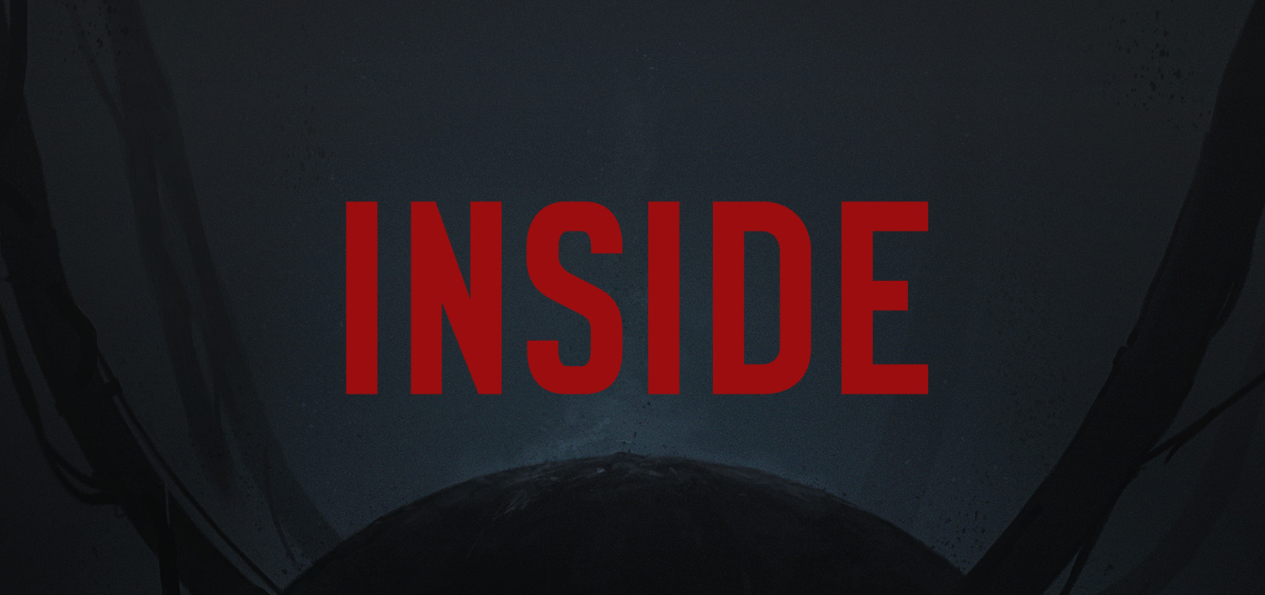
In 2010, the innovative Danish studio Playdead introduced the captivating monochrome platformer Limbo. After dedicating several years to adapting the game for various platforms, they made a surprising return six years later with… the same Limbo, but presented in profile view. To everyone’s amazement, the audience responded with enthusiastic applause once again. What could possibly explain this phenomenon? Let’s take a closer look and explore the reasons behind such an impressive reception.
Table of Contents
Inside Free Steam Account
Limbo is memorable for three distinct features. First, its exceptional artistic style and ambiance evoke the early black-and-white films from the German Expressionist movement. As the young protagonist navigates the dark, foreboding forest, the trees appear to reach for him, reminiscent of classics like Robert Wiene’s The Cabinet of Dr. Caligari, Friedrich Murnau’s Nosferatu: A Symphony of Horror, and Fritz Lang’s Destiny. The stark black-and-white palette, primarily dominated by shadows, highlights the boy’s glowing eyes, enchanting viewers from the very first moment and immersing them in a world that feels both surreal and hauntingly familiar. Secondly, the theme of relentless death looms over the main character, a child who embodies innocence amidst chaos. Throughout this short but impactful journey, we witness the boy’s body being brutally torn apart by various traps and snares, or shredded by a spider, each death striking a deep chord of vulnerability and loss. This cycle of death serves not only as a gameplay mechanic but also as a poignant reminder of the fragility of life, especially for a child navigating a perilous world.
This also fits well within the realm of dark German expressionism, yet the way the Danes so brazenly broke the unspoken taboo against depicting child murder in video games was genuinely startling. Ultimately, Limbo showcased sophisticated physics that enabled players to engage with a range of intriguing puzzles. However, the term “range” feels a bit misleading—most of the time, the boy was simply moving boxes, activating levers, crawling along ropes, and swinging from them. It was a repetitive cycle that, while engaging, lacked variety. Only as the game approached its conclusion did more captivating challenges involving gravity and its absence finally emerge, adding a layer of complexity. This led some particularly fastidious critics to scold the creators for their choices, but their dissenting opinions were largely drowned out by the overwhelming praise and admiration from audiences who appreciated the game’s unique atmosphere and artistic vision.
Free steam account distribution continues – hurry up!
Inside from the creators of Limbo?
In Inside, the core elements remain unchanged, though it now operates on a different engine, Unity. Its previously stark black-and-white palette has introduced a bit more brightness and even color—yellow chicks, vibrant red buttons…
Once again, the stunning artistic style blends Gothic, noir, futurism, and surrealism masterfully. The boy navigates eerie environments (including a forest, of course), evading fierce dogs, facing brutal deaths every few minutes, and hauling heavy boxes. The gameplay mechanics are identical—he can run both forward and backward, jump, and grasp various objects. He hasn’t been taught to fight; instead, he must rely on his instincts to flee, conceal himself, and outwit the relentless foes, leading them into unnecessary actions before making his escape or swimming away to safety.
Certain puzzles and scenarios are nearly identical in nature. In Limbo, the boy had the ability to grasp the legs of a massive mosquito, allowing him to soar over various barriers. In Inside, he similarly makes use of the surrounding flora and fauna—like chickens that can be lured to a particular machine, where they are launched to knock over another crate. This has led some critics to accuse the Danish developers of repetitiveness, and now, of self-referential copying as well, raising questions about their creativity.
Secrets of Heredity in the Dark World of the Future
Even if this is a new iteration of the same game, it feels undeniably like a richer and more refined experience—more cohesive, thoughtful, and varied in its approach.
The studio’s debut was a dark, fantastical tale infused with echoes of the “Divine Comedy,” whereas the sequel unfolds as a stark dystopia, reminiscent of George Orwell’s “1984.” Throughout our journey, we find ourselves fleeing from unsettling figures who either transform others into zombies, resurrect the deceased, or engage in bizarre genetic experiments. Much like Limbo, the narrative offers little clarity or direct explanation; however, in Inside, the suspense grips us tightly until the very end. The surreal climax leaves you staring at the credits, pondering: what on earth did I just experience? The story is rich with opportunities for interpretation and speculation, inviting players to explore its depths. Additionally, there’s a hidden ending that requires diligently collecting secrets to unlock, further enhancing the sense of mystery and discovery.
Additionally, even with its bursts of color and a somewhat brighter palette, Inside feels even more unsettling—primarily due to its greater sense of mystery and lack of clarity throughout the experience. At one point, we find ourselves submerged underwater, confronted by a peculiar girl with long hair, reminiscent of eerie characters from classic Japanese horror stories. Who she is or what she represents remains an unsettling mystery, and that ambiguity is far more alarming than the easily recognizable spiders we encounter earlier in the game.
Oh wind How much power you have
There are still numerous box exercises, but they are designed in much more captivating and interactive ways. For example, some boxes come with motors that enable them to gracefully lift off the ground on their own, adding an element of surprise. The same applies to water activities—the boy occasionally swims, sinks, and adjusts the water level, creating an engaging experience. Yet, the physics of liquids is applied more often and in fascinating and unexpected ways. In certain scenarios, water actually appears to be above the floor, so when you swim out, you suddenly drop down onto the ground, which adds to the thrill.
There continues to be an abundance of puzzles that challenge reaction speed, demanding precise calculations down to the hundredth of a second for when and where to jump or dash to avoid obstacles. Again, though, there are more intriguing and creative situations. The moment when the boy plays hide and seek amidst fierce gusts of wind is genuinely one of the finest scenes in the genre, showcasing both the beauty of the environment and the challenges he faces.
Moreover, there are intriguing challenges involving the ability to control others from a distance—we compel them to unlock gates, shift boxes, and even launch us into the air. In one instance, to remain incognito, you must blend in by mimicking the movements of others, acting like a “zombie” as you replicate their jumps and spins. In another scenario, you need to liberate over a dozen of these “puppets” and skillfully direct them to a specific spot, where they will stand on a platform and unlock a door for us. This bears some resemblance to the clone mechanics found in The Swapper, yet the Danish developers have infused their own creativity and flair, seamlessly integrating it into a dystopian setting that is brimming with eerie, unsettling secrets and mysteries waiting to be unraveled. Lastly, the physics are applied in a more vibrant and engaging manner—we can smash through walls and ceilings in specific locations while maneuvering a small submersible, adding an exhilarating layer to the gameplay experience.
Verdict on the game INSIDE
They say you can’t step into the same river twice. However, Danish studio Playdead seems to dispute this statement. Six years after their debut, they are once again going back to their roots, returning to their first game – but not just repeating the past, but rethinking it with new ideas and a more mature approach. The result is impressive: Inside is rapidly gaining recognition among both critics and players. We sincerely join in the applause, although we still hope that in the future, the developers will dare to step beyond the usual and give us something truly new – even if in the same dark, contrasting visual key.
Pros:
- A gripping plot shrouded in mystery, capable of holding attention from the first frame to the end;
- Impeccable visual style that amazes with its expressiveness;
- An atmosphere that immerses the player completely;
- Intellectually rich puzzles that awaken excitement and curiosity.
Cons:
- Many game mechanics, as well as individual scenes and tasks, are noticeably reminiscent of Limbo, which may leave some players with a sense of deja vu and a lack of novelty.
INSIDE system requirements
To run INSIDE smoothly, you will need at least 4 GB of RAM and 3 GB of free space on your hard drive. The minimum graphics card required for the game is a GeForce GT 630, but for a significantly better gaming experience, the developers strongly recommend upgrading to a GeForce GTX 660. When it comes to the processor, the Core 2 Quad Q6600 is the bare minimum you’ll need; however, if you want to optimize your settings and truly enjoy a more fluid gameplay experience, it’s wise to consider choosing a Phenom II X2 550 or a more powerful CPU. This will greatly enhance your overall enjoyment of the game.
| Requirement | Minimum | Recommended |
|---|---|---|
| Graphics Card | NVIDIA GT 630 / 650m or AMD Radeon HD6570 or equivalent | NVIDIA GTX 660 or Radeon R9-270 |
| Processor | Intel Core 2 Quad Q6600 @ 2.4 GHz or AMD FX 8120 @ 3.1 GHz | Intel i7 920 @ 2.7 GHz or AMD Phenom II 945 @ 3.0 GHz |
| RAM | 4 GB | 8 GB |
| Storage | 3 GB available space | 3 GB available space |
| Operating System | Windows 7 / 8 / 10 (64-bit OS required) | Windows 8 / 10 (64-bit OS required) |
| DirectX | Version 9.0c | Version 11 |
How to play INSIDE for free on Steam via VpeSports
Want to immerse yourself in a disturbing, minimalistic world where every move can be your last, where mysteries pierce your consciousness, and the visual style captivates you from the first frame – and all this is completely free? Great news: you can play INSIDE without spending a single penny. No pirated copies, no dubious sites – just you and the silence of this strange, dead world.
The VpeSports website offers access to a Free Steam account with INSIDE, and it’s absolutely real. All you need to do is complete a simple registration, go to a special section with free accounts and find INSIDE in the list. Then there’s a download button, clear step-by-step instructions, and in just a couple of minutes you’re making your way through the darkness, hiding from pursuers and unraveling dark mysteries.
If the game left a mark (and it will – it’s not just played, it’s experienced), be sure to leave a review. This will help others make a choice, and you will get a bonus – after moderating the comment, you will receive login details by e-mail. Didn’t pass the first time? No problem – just adjust according to the hint and try again.
In order not to miss new distributions and maintain access to the games, subscribe to our Telegram channel and look into the chat. There, players share their impressions, discuss the ending and help if something went wrong. And a detailed guide is already waiting on the site. So don’t hesitate – fear, curiosity and silence are already calling you inside.








Inside i was waiting for this game thanks fot it .
thanks vp eSports for this game ❤️❤️
this game is so good thanks vpesports
i love this game thanks vp esport
very nice game i want to play this
Please verify my account bro
i want to play the game please
Great game thank you man for bringing it here it’s great
i love this game, very good game, i want to play, please bro !
thanks for game, is good <3